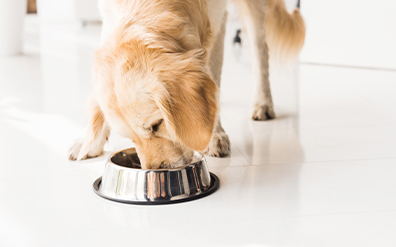Common Causes for a Dog Not Eating
When your dog refuses to eat, it’s essential to consider the many factors that could be at play. Understanding these common causes can help you pinpoint what might be wrong. Sometimes, the reasons are simple and easily addressed, while other times, they may require more attention.
Stress or Anxiety: Just like humans, dogs can experience stress from changes in their environment, such as a recent move, a new pet in the home, or even changes in their routine. Stress can suppress their appetite temporarily.
Medical Conditions: Various health issues can cause a loss of appetite. Dental problems, such as tooth decay or gum disease, can make eating painful. Gastrointestinal issues, like an upset stomach or bloating, can also lead to a refusal to eat. Infections, parasites, or more severe conditions like kidney or liver disease might be the root cause as well.
Dietary Changes: Sometimes, a change in the type of food you’re offering or the way it’s prepared can lead to your dog turning away from their meal. Dogs can be particular about texture, flavor, and even the temperature of their food.
Recognizing these common causes is the first step toward helping your dog regain their appetite. Keep an eye on their behavior and eating patterns, as this can provide valuable clues. If the problem persists, it’s time to explore further options or consult your veterinarian.
When to Consult a Veterinarian in Frisco
It’s crucial to know when a dog not eating is a sign of a more serious issue that requires veterinary attention. While some dogs might skip a meal occasionally without consequence, other symptoms accompanying a reduced appetite in dogs can indicate a more significant health concern. Here’s when you should consider reaching out to a veterinarian:
Prolonged Loss of Appetite: If your dog hasn’t eaten for more than 24 hours, it’s time to consult a vet, especially for puppies, seniors, or dogs with existing health issues. A quick response can prevent more severe problems from developing.
Additional Symptoms: Look for signs like vomiting, diarrhea, lethargy, or rapid weight loss. These symptoms, combined with not eating, can signal issues like gastrointestinal problems, infections, or organ disease.
Changes in Behavior: If your dog is more withdrawn, unusually aggressive, or displaying signs of pain, these changes alongside a refusal to eat could point to underlying medical conditions that need prompt attention.
Being vigilant about these warning signs ensures you can act quickly, safeguarding your dog’s health. Early diagnosis and treatment can make a significant difference, so don’t hesitate to contact your vet if you’re concerned.
Dog Feeding Tips and Tricks to Encourage Eating
If your dog isn’t eating, there are several strategies you can try to stimulate their appetite. These tips can help make mealtime more appealing and ensure your furry friend gets the nutrition they need.
Change the Menu: Sometimes, simply switching to a different type of food can make a big difference. Dogs can become bored with their usual meals, so try offering a new flavor or brand. Warming up the food slightly can also enhance its aroma, making it more enticing.
Create a Comfortable Feeding Environment: Make sure your dog’s eating area is calm and quiet, away from loud noises or distractions. Some dogs might prefer eating alone, especially if they’re nervous eaters. Setting up a consistent feeding routine can also help them feel more secure and relaxed at mealtime.
Use Fun Feeding Methods: Try using puzzle feeders or slow feeders to make eating more engaging. These tools can turn mealtime into a game, stimulating your dog’s natural instincts and encouraging them to eat. Hand-feeding is another option that can strengthen your bond and make your dog feel more comfortable.
By experimenting with these techniques, you can find the best approach to encourage your dog to eat. Remember, if your dog’s appetite issues persist, consulting with a veterinarian is always the best course of action.
Ensure Your Dog’s Health and Happiness in Frisco, McKinney, and Plano
When your dog isn’t eating, it’s natural to worry, but understanding the potential causes and knowing when to seek help can make a big difference. Whether your dog is stressed from a move, has a sensitive stomach, or needs a vet in Frisco, it’s important to keep a close eye on their behavior and take action when necessary. If you’re concerned about your pet’s health or need professional guidance, don’t wait. Book an appointment with our experienced team at PetNest Animal Hospital
today to ensure your furry friend gets the best care possible.


